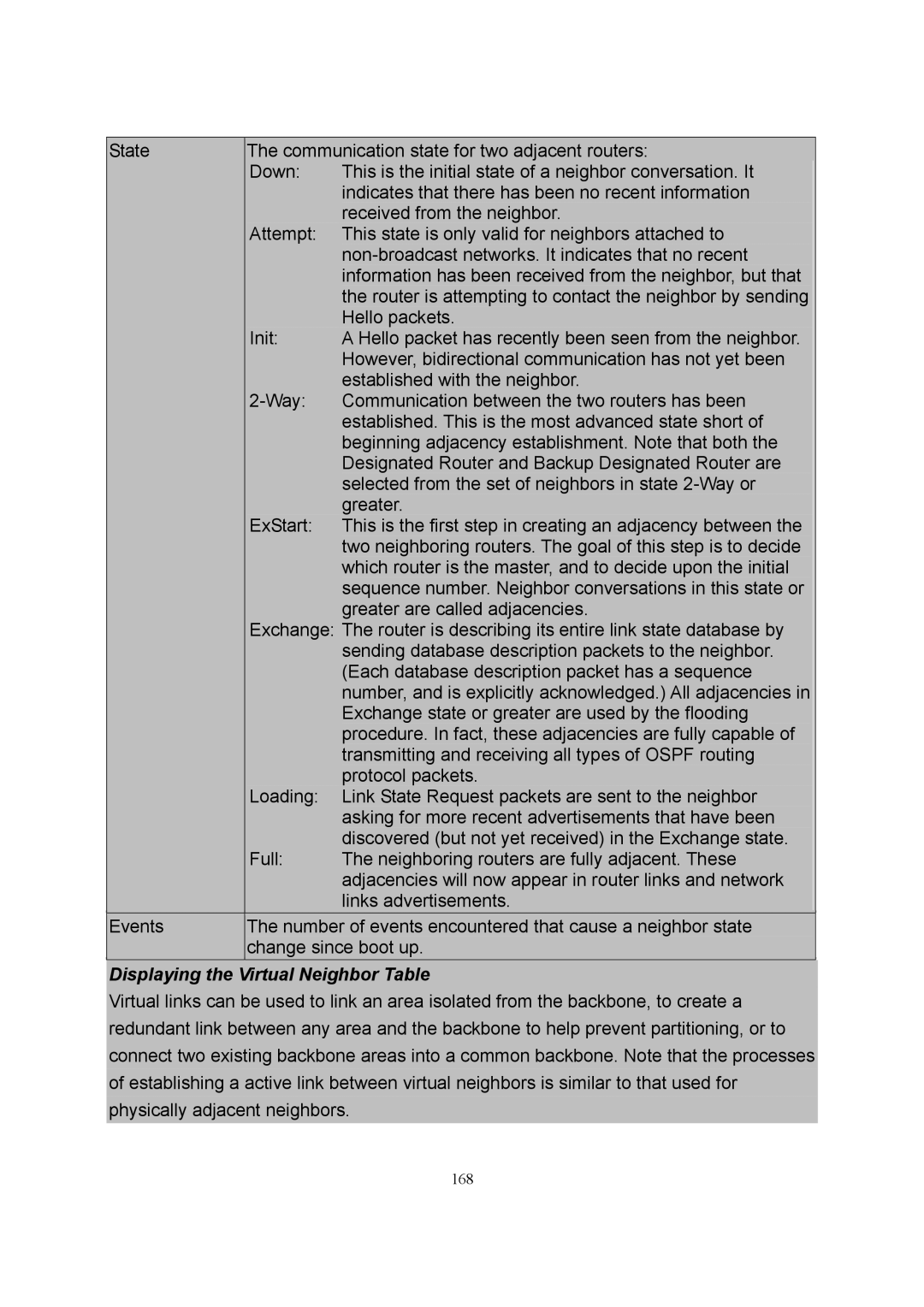
| State | The communication state for two adjacent routers: |
| |
|
| |||
|
| Down: | This is the initial state of a neighbor conversation. It |
|
|
|
| indicates that there has been no recent information |
|
|
|
| received from the neighbor. |
|
|
| Attempt: | This state is only valid for neighbors attached to |
|
|
|
|
| |
|
|
| information has been received from the neighbor, but that |
|
|
|
| the router is attempting to contact the neighbor by sending |
|
|
|
| Hello packets. |
|
|
| Init: | A Hello packet has recently been seen from the neighbor. |
|
|
|
| However, bidirectional communication has not yet been |
|
|
|
| established with the neighbor. |
|
|
| Communication between the two routers has been |
| |
|
|
| established. This is the most advanced state short of |
|
|
|
| beginning adjacency establishment. Note that both the |
|
|
|
| Designated Router and Backup Designated Router are |
|
|
|
| selected from the set of neighbors in state |
|
|
|
| greater. |
|
|
| ExStart: | This is the first step in creating an adjacency between the |
|
|
|
| two neighboring routers. The goal of this step is to decide |
|
|
|
| which router is the master, and to decide upon the initial |
|
|
|
| sequence number. Neighbor conversations in this state or |
|
|
|
| greater are called adjacencies. |
|
|
| Exchange: | The router is describing its entire link state database by |
|
|
|
| sending database description packets to the neighbor. |
|
|
|
| (Each database description packet has a sequence |
|
|
|
| number, and is explicitly acknowledged.) All adjacencies in |
|
|
|
| Exchange state or greater are used by the flooding |
|
|
|
| procedure. In fact, these adjacencies are fully capable of |
|
|
|
| transmitting and receiving all types of OSPF routing |
|
|
|
| protocol packets. |
|
|
| Loading: | Link State Request packets are sent to the neighbor |
|
|
|
| asking for more recent advertisements that have been |
|
|
|
| discovered (but not yet received) in the Exchange state. |
|
|
| Full: | The neighboring routers are fully adjacent. These |
|
|
|
| adjacencies will now appear in router links and network |
|
|
|
| links advertisements. |
|
| Events | The number of events encountered that cause a neighbor state |
| |
|
| change since boot up. |
| |
Displaying the Virtual Neighbor Table
Virtual links can be used to link an area isolated from the backbone, to create a redundant link between any area and the backbone to help prevent partitioning, or to connect two existing backbone areas into a common backbone. Note that the processes of establishing a active link between virtual neighbors is similar to that used for physically adjacent neighbors.
